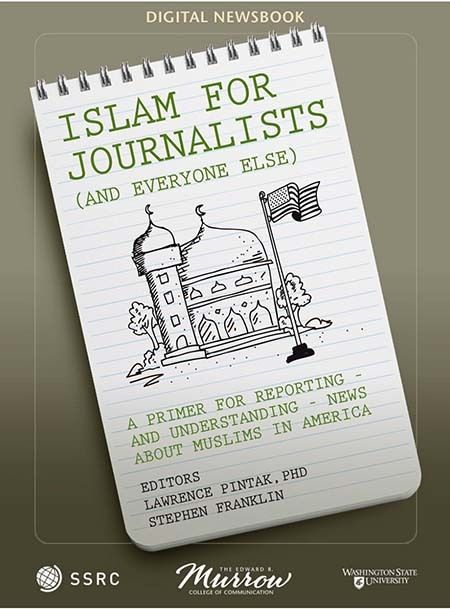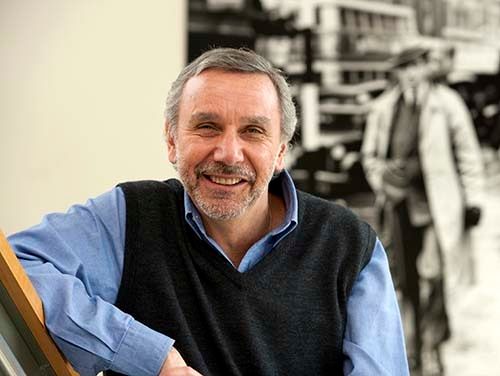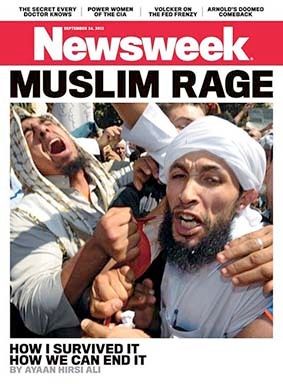Most American journalists probably know little about covering Islam accurately, fairly, ethically and contextually amid rising levels of xenophobia, hate speech and “fake news” in the U.S., but help is on the way.

Screen shot of TIME magazine cover
In 1980, I arrived in Beirut as CBS News Middle East correspondent. My qualifications for covering this complex region? I had been reporting on wars in Africa, so I knew how to dodge bullets. Oh, and I had taken a class on the Arab-Israeli conflict as an undergrad in college. Of Islam, the dominant religion in the region, I knew essentially nothing.
If foreign correspondents assigned to the Muslim world have such an inadequate understanding, there is no reason to expect reporters and editors based in the U.S. to be any more prepared to tackle stories involving Islam and Muslims, much less the average news consumer.

Screen shot of "Islam for Journalists (And Everyone Else)"
Words by Lawrence Pintak in the preface of the revised and expanded second edition of “Islam for Journalists (And Everyone Else)” that he and fellow veteran journalist Stephen Franklin co-authored and co-edited.
Correspondents who spent years covering the Middle East/North Africa region and had a grasp of Islam, like the late Wilton Wynn and John K. Cooley, were the exception.
Pintak, a professor and founding dean (2009-2016) of the Edward R. Murrow College of Communication at Washington State University, knows the perils of lopsided media coverage.

Lawrence Pintak (courtesy Washington State University)
But he sees improved expertise of American reporters covering the Middle East in the past decade - many are fluent Arabic speakers and studied Arab politics, religion and culture before entering journalism - and Arab-Americans, as well as Arab-born journalists reporting for American media adding the needed nuance in stories.
“While regional coverage has improved, domestic coverage of Islam is a different story,” he told me about why he and Franklin produced the book. “That’s because it has become a local story in many parts of the country and local reporters, unlike foreign correspondents, can’t be expected to know much about the subject.”
This e-book is aimed at both news consumers and those who produce the news. A little knowledge goes a long way in creating an educated news consumer who can separate facts from stereotype and distortion. Ditto the reporters whose job it is to do just that.

Screen shot of Newsweek cover
The danger may be freelancers, citizen journalists, and social media users in the US weighing in on Islam, causing irreparable damage.
“As we have seen in the past year, the rise of social media and ‘alternative’ news sources and so-called ‘alternative facts’ have distorted how Americans see a host of issues – from climate change to nuclear proliferation,” Pintak said. “In the case of Islam, the Internet has given voice to a subculture of Islamophobes who have a very dangerous agenda – and who now occupy the corridors of power.”
The 12 chapters in this e-book funded by the Social Science Research Council and the Carnegie Corporation of New York are a rich compilation of tips, insights and advice on covering a complex and sensitive topic.
It groups five of the top academic experts on Islam, along with a chapter by Pintak and a Pakistani scholar who is a former newspaper editor.
It includes first-person case studies from working journalists on covering challenging stories about Islam.
“The goal of these pieces was to help journalists see how others learned about and approached their coverage of Islam,” Pintak explained.
From “Islam 101,” to covering Islam in America, to Islamic civilization, to newer manifestations like the Islamic State (a/k/a ISIS), to domestic terrorism, to women and Islam, to digital Islam, to the use of language in Islam and glossaries of terms, the book is an immersive course in the religion, its adherents, its sects, its divisions, and more.
The 2013 first edition was subtitled “A Primer for Covering Muslim Communities in America.” The second was renamed “A Primer for Reporting – And Understanding – News About Muslims in America.”
What auspicious timing in 2017!

Screen shot of The Economist cover
For contributor Andrea Elliott, covering Islam in America was a deep learning curve.
The media’s study of Islam largely began on 9/11 as a frenzied crash course. Reporters were scrambling to make sense of the attacks, and a fringe interpretation of Islam was at the center of the story. Never mind that this complicated, sprawling, 14-centuries old religion is not a subject that can be learned on deadline. The press lacked even the most basic guidance.
Journalists are cautioned not to lump all Muslims in the same basket.
Contributor and former Reuters veteran Jonathan Lyons, author of The House of Wisdom: How the Arabs Transformed Western Civilization, said the American public’s low level of knowledge about the Muslim world places a special burden on today’s journalist, who must negotiate complex terrain through long-standing religious rivalry, historical grievances, political antagonisms, and social differences.
As with any beat, covering Islam and the Muslims effectively comes down to some familiar basics. These include: story selection, identification of sources, decisions of omission and commission, and presentation.
The authors state the obvious about doing the legwork, developing sources, establishing rapport with often suspicious subjects who’ve been racially profiled or maligned by the media, and untangling a messy web of story elements: religion, politics, economics, social mores, traditions, culture and heritage.
In his chapter “Covering Islam Over There From Over Here,” co-author Franklin hit the nail on the head in an example on reporting about newly arrived immigrants from a Muslim country in a local US community, and about whom a reporter is clueless, noting that journalists shouldn’t despair.

Stephen Franklin (courtesy Franklin)
The fact is, this kind of reporting is quite possible. But it calls for some research and learning. However, the payoff is worth the effort in terms of providing balanced, accurate and analytical reporting. The price for doing your utmost is providing the kind of journalism that will not only enlighten but will also do no unnecessary harm.
His advice: set out a reporting strategy; develop a list of sources and contacts in the local Muslim community (and understand the community’s diversity); be available to the contacts and develop trust; identify experts (no easy matter); include as many views as possible (not just biased ones); seek overseas contacts; and, very importantly, provide a global perspective to the reporting.
The book is an invaluable resource for journalists and an easy reference for the uninitiated produced by two veterans who have studied Arabic and are well versed in Islam.
